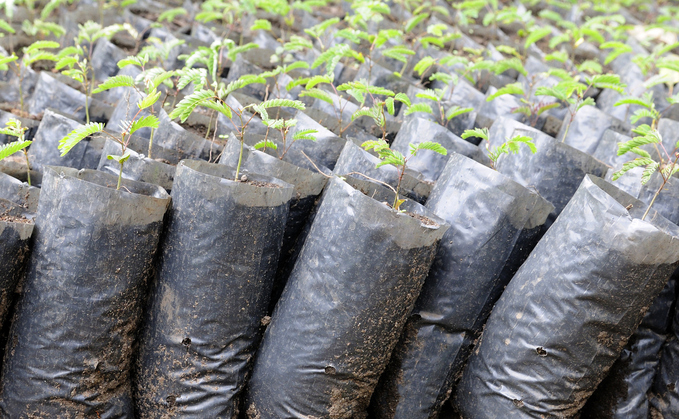
Industry Voice: Atkins' Kate Vincent shares her knowledge on carbon removal - one of the most discussed environmental topics of recent times
Carbon removal is one of the most discussed environmental issues of our times and high on the agenda of engineering, design and project management multinational Atkins. Here the firm's director for ecology Kate Vincent shares her knowledge on this critical topic.
Broadly speaking, carbon removal falls into two themes: biological/nature-based solutions, and those that are technological. While the latter is effective and immediate, it's also new and, therefore, currently small-scale and expensive. However, nature-based solutions can provide an immediate and sound foundation in the contribution towards the carbon-removal agenda, through habitat creation and restoration.
The importance of nature-based solutions
Restoring and creating habitat improves biodiversity, reduces carbon emissions and flood risk, and provides climate resilience, something that's key for the coming years.
Currently, as a global community, we're not on track to achieve one of the main aims of the 2015 Paris agreement; to hold the increase in the global average temperature to well below 2°C, and to pursue efforts to limit the temperature increase to 1.5 °C. This has resulted in an emissions gap, which is the difference between where greenhouse emissions are predicted to be in 2030, and where they should be to avoid the worst impacts of climate change.
"This needs resolving, it must be dealt with now, and the only solution we are left with is to use nature to bridge that emissions gap," says Vincent. "It's a lot more economical to work with nature, and better all round for the environment. Everyone talks about a climate change emergency, but there's also a biodiversity emergency. They're inextricably linked - you can't deal with climate change without looking at biodiversity loss at the same time. So, nature-based solutions provide a way forward to ensure both of those elements are dealt with."
Climate change is happening now, and we're already seeing the environmental and social impacts. But, by creating and restoring habitat, we can be more prepared for these climatic changes, increase our climate resilience and provide benefits for people and biodiversity too. Behaviours need to be changed, with us looking to nature for the answer.
Looking beyond the obvious
Atkins don't just focus on biodiversity, we consider the added environmental and social benefits, too. In particular, social value; restoring nature and giving access to more green space is good for our health and wellbeing, especially as people have relied upon the outdoors even more during a long lockdown. It's also important from an ecosystem services point of view, for instance, creating woodland doesn't only capture carbon, but also improves air quality, reduces flood risk and provides recreational spaces for people to enjoy the outdoors. We join all these dots together within natural capital, so nothing is considered in isolation.
A recent Atkins project, where we worked with a large land holder in Essex, had the aim of creating more biodiversity and reduce the risk of flooding to the downstream village, through proposing land management changes and interventions across the site. Rather than solely advising on planting trees, we advised early-on in the process that natural flood management would be needed and recommended the introduction of beavers into the habitat. Beavers bring many benefits to an ecosystem, including reducing flood risk. In addition to enhancing ecosystem services delivery across the landholding, the land holder now also provides tours of the area, to allow visitors to see beavers in the wild. This brings social and economic value, as well as environmental benefits. We always aim to be holistic and innovative in our approach, providing as many benefits for climate, biodiversity and people as possible.
The Carbon Removal Playbook
We also input at a national, strategic level. In collaboration with Foresight Transitions, we created 'The Carbon Removal Corporate Engagement Guide' because within the corporate sector there is an awareness and understanding of the capacity gaps surrounding carbon removal. The guide, which was launched in June, is designed to provide corporate companies with the confidence and credibility to engage with carbon removal. This was an original and pioneering piece of work that is likely to have a large environmental impact, and we are very proud of our involvement. The next phase is to create a Carbon Removal Playbook for the corporate sector. Some of the aims of the Playbook will be to help stakeholders to understand the risks and opportunities they face in the net zero transition, assess the landscape of current carbon removal knowledge within industry and build capacity among industry audiences to engage with carbon removal.
Biodiversity net gain and carbon removal
Biodiversity net gain is an approach to development that aims to leave the natural environment in a measurably better state than beforehand, which will provide ameans of ensuring that there is a quantifiable overall increase in biodiversity following a new development. It is set to become mandatory for new projects in England as part of the Environment Act.
Atkins is one of the leaders in this subject, having been involved in much of the national policy and guidance to date. Carbon removal, through nature-based solutions, forms an integral and contributory part of biodiversity net gain by means of restoration or creation of habitat and, therefore, is of key importance to this crucial area. As this becomes mandatory, clients will need support and guidance on how biodiversity net gain and carbon removal is linked, something we are very well positioned to provide.
Vincent summarises: "Going forward with this holistic approach, propagated by ecologists through nature-based solutions, we will show how we can tackle biodiversity loss and climate change together."
Kate Vincent is associate director for Ecology at Atkins.
If you want help creating benefits for the climate, biodiversity and people, please get in touch with Atkins.
This article is sponsored by Atkins.








